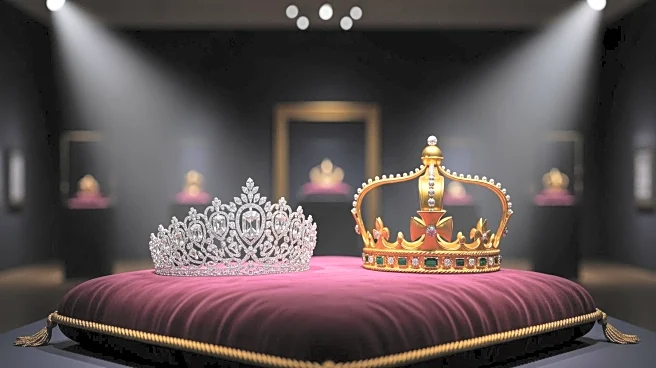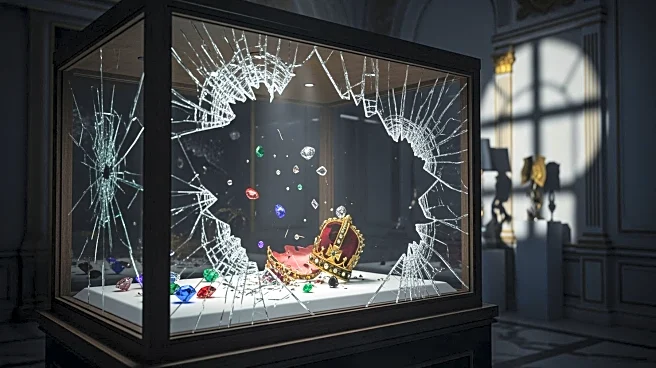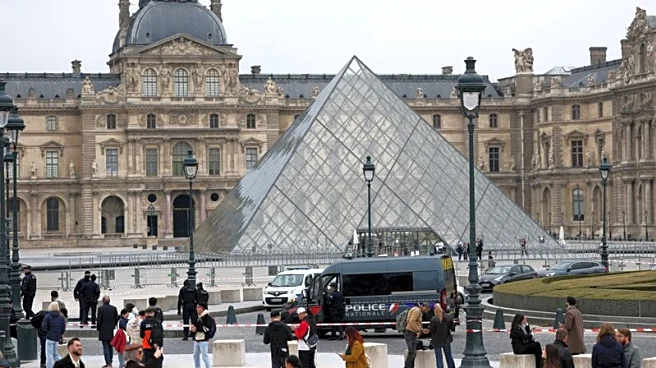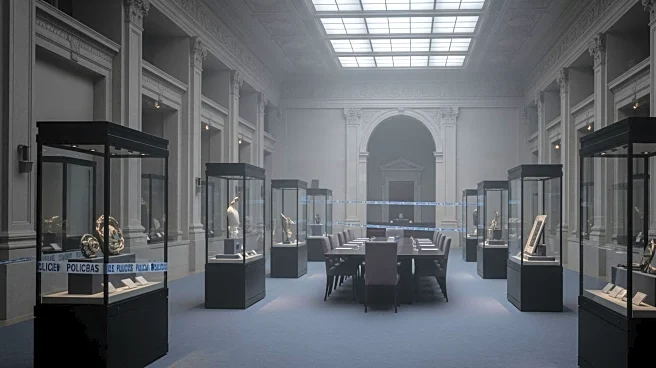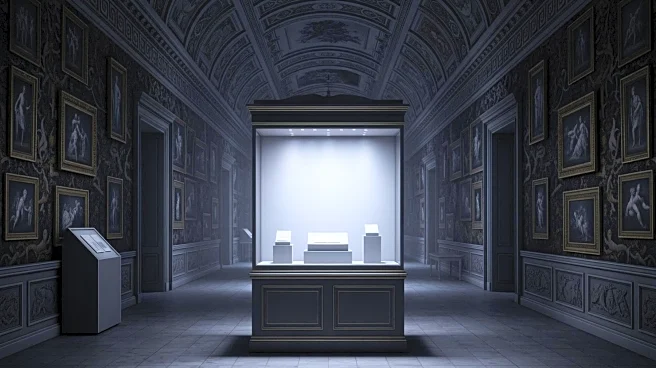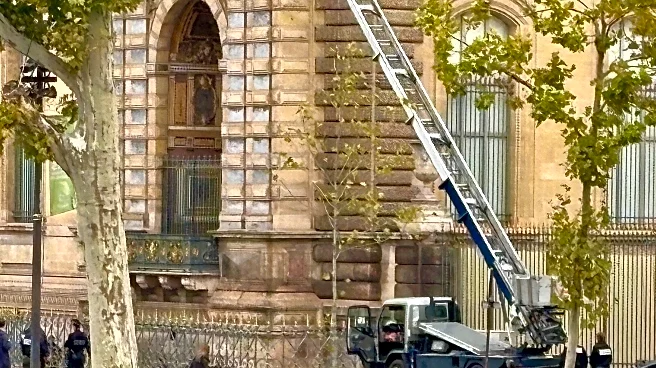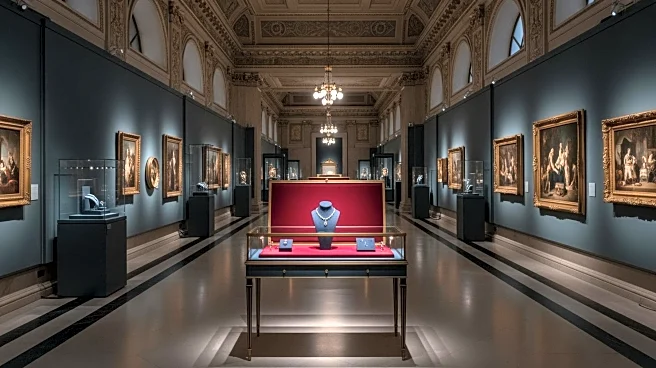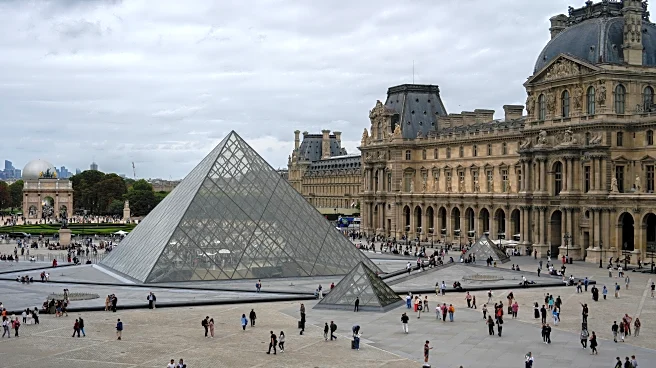What's Happening?
A daring daylight heist occurred at the Louvre Museum in Paris, where thieves used a mini chainsaw to cut through a glass case and steal nine precious items from France's Crown Jewels. The incident was
captured on CCTV, showing one of the suspects, dressed in a yellow hi-viz jacket over a black hoodie, casually cutting through the protective case. The heist took place on a Sunday morning, with the thieves reportedly using an aerial work platform to access the building through a window. Among the stolen items was a crown that once belonged to Empress Eugenie, wife of Napoleon III, which was later recovered. French magistrate Laure Beccuau described the thieves as highly prepared and organized.
Why It's Important?
The theft of such significant historical artifacts from a world-renowned institution like the Louvre highlights vulnerabilities in museum security and raises concerns about the protection of cultural heritage. The incident underscores the need for enhanced security measures in museums globally, as well as the challenges in safeguarding valuable artifacts. The heist could lead to increased scrutiny and potential policy changes regarding museum security protocols. The recovery of the stolen crown is a relief, but the theft of other items remains a significant loss, impacting both cultural heritage and the museum's reputation.
What's Next?
Authorities are likely to intensify their investigation to identify and apprehend the suspects involved in the heist. The Louvre Museum may review and upgrade its security measures to prevent future incidents. The cultural sector might see a push for more advanced security technologies and collaboration among international museums to protect valuable artifacts. The incident could also prompt discussions on the black market for stolen art and the need for stricter regulations and international cooperation to combat art theft.
Beyond the Headlines
The heist raises ethical questions about the motivations behind art theft and the demand for stolen cultural artifacts. It also highlights the ongoing issue of art repatriation and the complexities involved in recovering stolen items. The incident may lead to a broader conversation about the value placed on cultural heritage and the responsibilities of institutions in preserving and protecting it for future generations.


